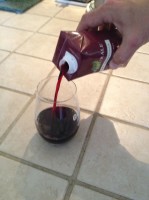 My local food market just upgraded its wine section – in response to the pending move next door of beverage giant Bev-Mo! – and now offers more choices, more unique offerings, and a large selection of wines in boxes!
My local food market just upgraded its wine section – in response to the pending move next door of beverage giant Bev-Mo! – and now offers more choices, more unique offerings, and a large selection of wines in boxes!
Gasp! Wine in a box? What is the world coming to, right?
There is more than one way to package wine nowadays – plastic bottles, boxes, aluminum cans, milk-like cartons – we are not limited to purchasing wine in a glass bottle closed with a natural cork. (For more on closures, see “Getting Closure: Corks or Screwcaps?”)
But before we look at the alternative packaging choices, let’s do a short review of ancient wine vessels.
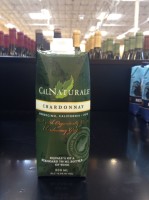
Ceramic Amphorae can be traced back to prehistoric times. In the Bronze and Iron Ages, Greeks and Romans transported and stored wine (as well as olive oil, grains, fish, and other commodities) in these vessels. Pliny, a first century naturalist, wrote prolifically on contemporary wine-making practices, including how to keep the amphorae clean in order to keep the wine from being tainted. A trip to the Getty museum will offer many lively depictions of ancient wine vessels in use.
Sometime in the seventh century, amphorae were replaced with wood and skin containers. Wood is still used today for storing and aging wine, and wineskins, which are made from the skin of a goat or sheep, are still in use in some cultures.
Wine bottles as we know them came along in the 17th century, when coal-fueled furnaces allowed for thick-enough bottles. Prior to that, the bottles were thin, and usually stored in straw so as not to break, and this is where the classic Chianti bottle has its roots.
For more than 400 years mankind has been using the thick glass bottle, which many consider to be the best container for wine ever invented. It’s inert, impenetrable, and available in different shapes, sizes, and colors. Most importantly, it’s traditional, and traditions are hard to give up.
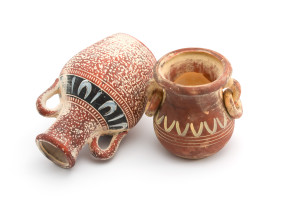
So why use anything else?
Glass bottles have their drawbacks. They are heavy, which adds to transport costs; they are fragile; they’re rigid, making it harder to tightly pack and store them; they do not block out UV radiation, so fluorescent lighting can cause chemical decomposition in the wine (a problem in supermarkets); and once opened, a bottle will have space for air, which can oxygenate the wine (not good) unless replaced with an inert gas (who wants to be bothered doing this, right?).
Alternative packaging includes the BIB, or Bag-in-Box. While I’m not quite ready to take one to a dinner party, I know plenty of people who do. This type of packaging provides an easy way to carry a large quantity of wine – up to 20 liters – and to draw off one glass at a time, over an extended period of time, while keeping the wine relatively fresh. First popularized in Australia, the idea is to have a plastic bag inside the box collapse to avoid the ingress of air. The problem is that the plastic is not as impermeable to air as glass, so the shelf life is relatively short, give or take 9 months. That’s “shelf life,” not “life after opening,” remember, so it would be wise to check the packaging date when purchasing. Who knows how long it’s been sitting on the store shelf.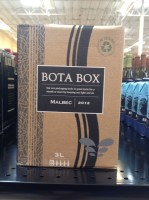
An example is the Bota Box (www.botabox.com), which states on the package, “Our eco packaging locks in great taste for a month or more by keeping out light and air.” Each box contains 3 liters of wine, available in 10 different varietals, and ranges in price from about $15-$22.
Aluminum cans for wine are much like a beer can, and therein lies one of their problems, image. But a can holds two glasses of wine, is light, strong, impermeable, and can live on a shelf for about 9 months.
An example: Sofia Blanc de Blanc Effervescent White Wine from Francis Coppola. Slick packaging includes a hexagonal foil-covered box containing four one-serving cans with a plastic straw attached to each – an adult Sippy cup (or not so adult!). I bought this one at The Wine House (www.winehouse.com), on sale for $12.99, but it can be as much as $20.
Tetra Pak, or cardboard “brick,” is another option. These are like the fruit juice and milk containers we all are familiar with, and are low-cost, provide a good oxygen barrier and reasonably good shelf life. Tetra Paks are the only packaging that is truly aseptic.
I tried the CalNaturals (www.calnaturale.com) Cabarnet Sauvignon, from Paso Robles, California, made with organically grown grapes. I loved what the packaging says, “No awkward tools are required to open our package. Simply unscrew the cap, pour a glass and ENJOY!” I guess they consider a corkscrew an “awkward tool”!
Wine is also available in plastic bottles. You will find these quarter-bottle sized bottles on airplanes. They are lightweight, but not impermeable to oxygen and therefore have a very short shelf life. I have not found any for sale in local markets.
I love wine bottles, just like I love cork stoppers. I don’t foresee moving away from them any time soon, but I applaud the new wine packaging, especially when the intent is to provide a more eco-friendly and convenient alternative to glass bottles.
Wine connoisseurs are unlike to stray from the classic bottle, and many will disparage the new-fangled packaging. But, as ReddCollection’s Michael Carpenter says in this nice video (http://tinyurl.com/nctpofz) (as seen on The Young Turk Network, http://www.tytnetwork.com) when asked about bottles, pouches, and boxes, “If it makes you happy, enjoy it!”
Until Next Time, Cheers!
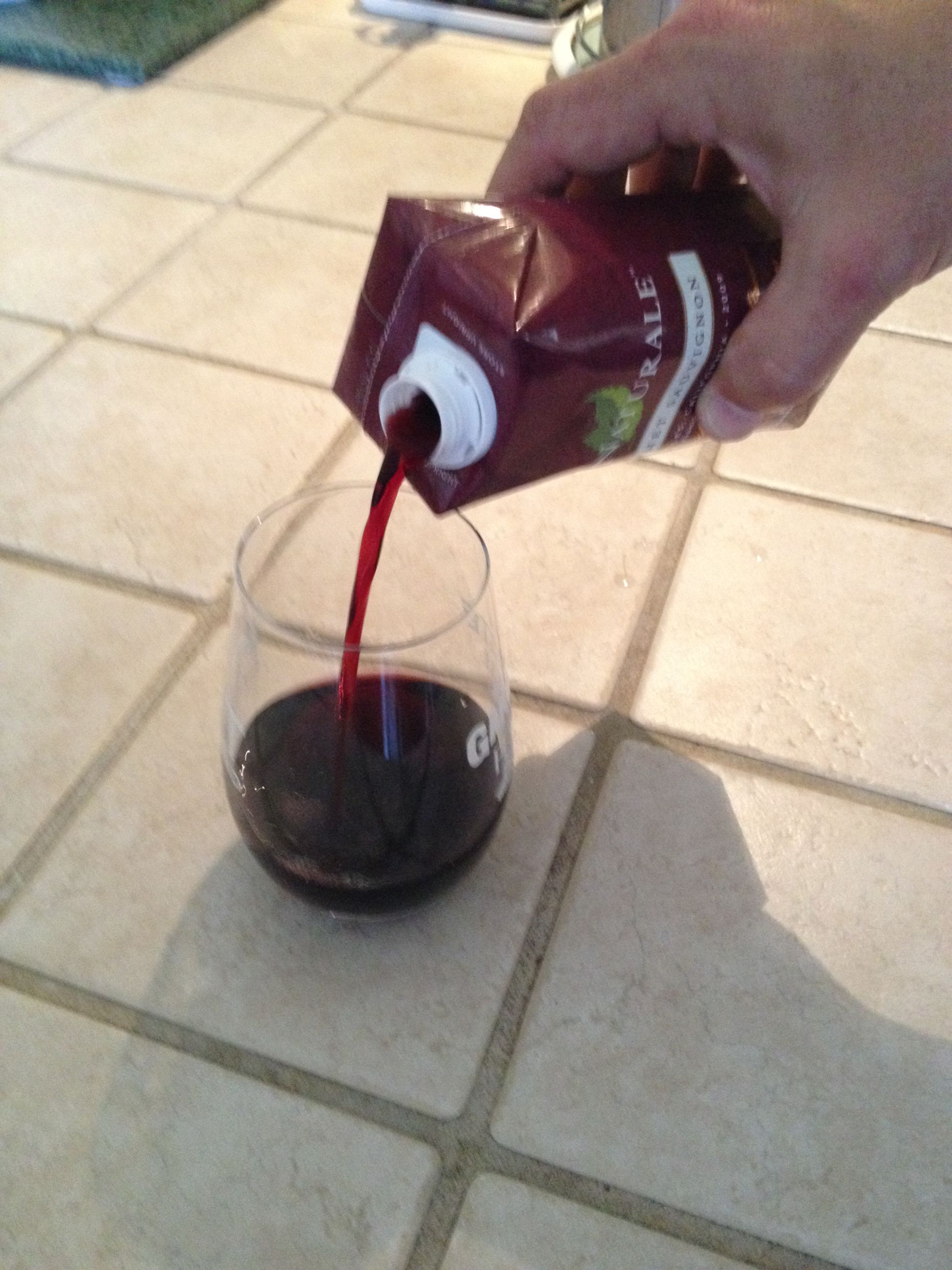

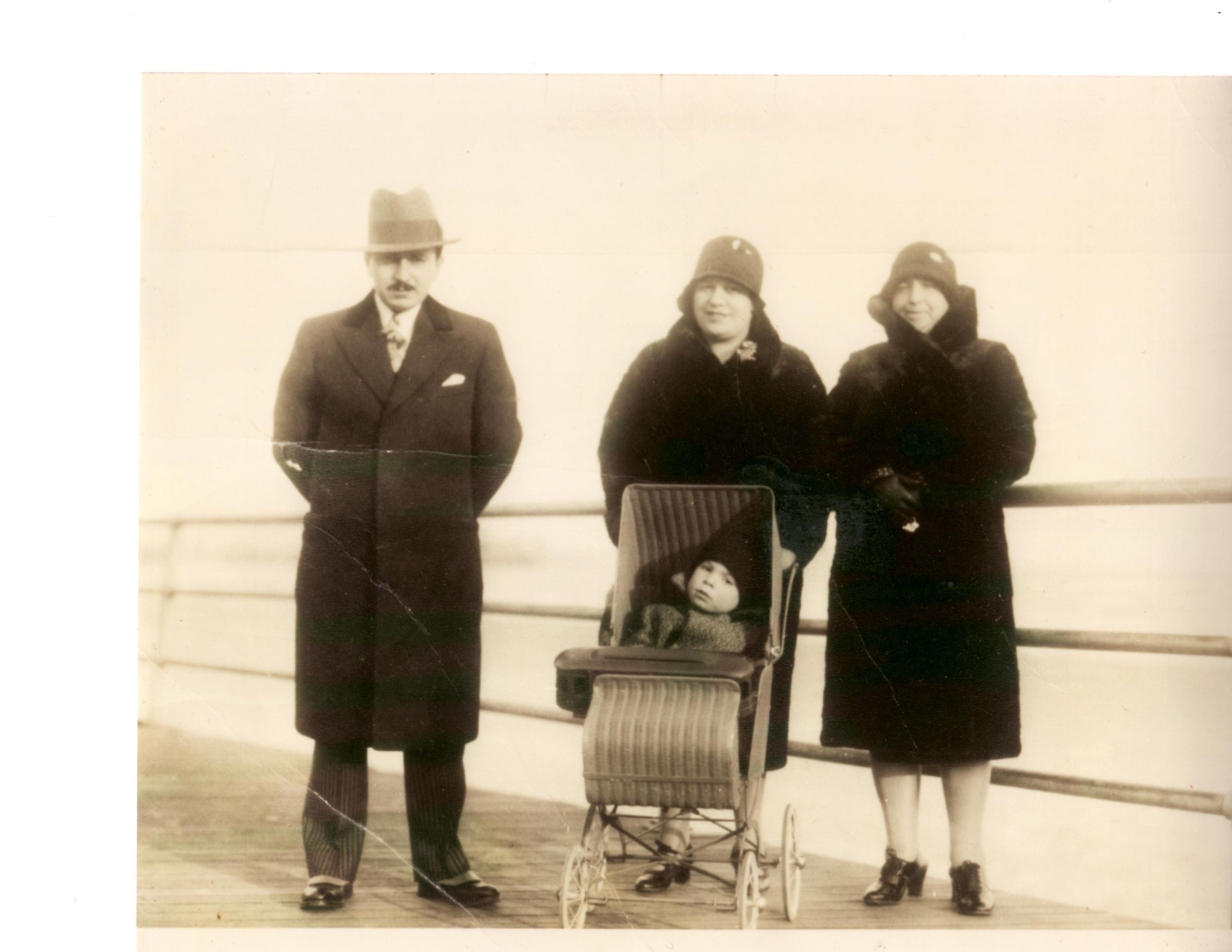


 Hi I’m Catherine, founder of Wine Women And Chocolate. Want to become a contributor for Wine, Women & Chocolate? Interested in sharing your unique perspective to a group of supportive, like-minded women?
Hi I’m Catherine, founder of Wine Women And Chocolate. Want to become a contributor for Wine, Women & Chocolate? Interested in sharing your unique perspective to a group of supportive, like-minded women?
Good Afternoon everybody , can anyone suggest where I can purchase Green Eagle CBD Topical Broad Spectrum Muscle Relief Roll On 500mg 1000mg?